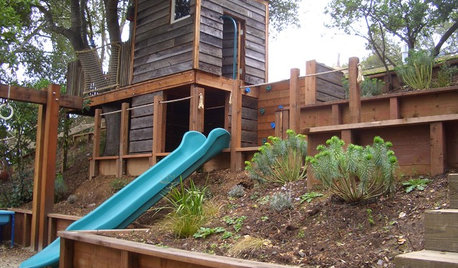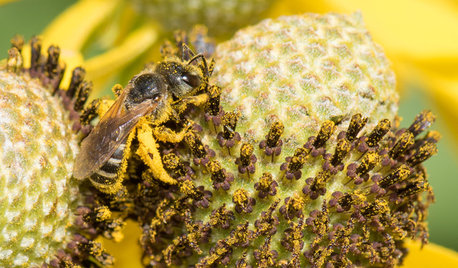Adult Pheasants introduced into the wild
seramas
15 years ago
Related Stories

DECORATING GUIDES16 Lounges Go Wild for Science at San Francisco's Exploratorium
See the imaginative designs concocted and let us know which style formula works best for you
Full Story
PETSHow to Help Your Dog Be a Good Neighbor
Good fences certainly help, but be sure to introduce your pup to the neighbors and check in from time to time
Full Story
FUN HOUZZWhat Could You Imagine With Lego's New Architecture Kit?
Go ahead, toy around with wild building ideas. With 1,210 all-white blocks at your disposal, it's OK to think big
Full Story
KIDS’ SPACES8 Outdoor Playspace Ideas to Nurture Kids' Imaginations
Can the call of the wild beat out the call of the TV this summer? With these ideas for encouraging exploration, the game is on
Full Story
GARDENING GUIDESInvite Mining Bees to Your Garden by Planting Their Favorite Plants
Look for mining bees (Andrena) pollinating woodland wildflowers in U.S. gardens this spring
Full Story
GARDENING GUIDESWelcome Sweat Bees to Your Garden Throughout the Growing Season
Look before you swat! These friendly sweat bees will feed on your sweat on a hot summer day, but their main buffet is flowers
Full Story
GARDENING FOR BIRDSWhat to Know About Birds Nesting in Your Yard
Learn how to observe, record data and help ornithologists with NestWatch’s citizen science project understand bird trends
Full Story
FURNITUREThe Coffee Table Grows Up
These statement pieces reinvent the coffee table and can transform the living room
Full Story
REMODELING GUIDESOne Guy Found a $175,000 Comic in His Wall. What Has Your Home Hidden?
Have you found a treasure, large or small, when remodeling your house? We want to see it!
Full Story
PLANTING IDEASBig Foliage for Small Spaces
Use bold, large-leaved plants to create intriguing contrast in a garden where they’re least expected
Full Story





brendan_of_bonsai
seramasOriginal Author
Related Professionals
Glassmanor Landscape Architects & Landscape Designers · Williamsburg Landscape Contractors · El Sobrante Landscape Contractors · Maywood Landscape Contractors · Middletown Landscape Contractors · North Chicago Landscape Contractors · Plainview Landscape Contractors · Thonotosassa Landscape Contractors · Winchester Landscape Contractors · Eastlake Landscape Contractors · Raytown Landscape Contractors · Modesto Fence Contractors · Wilmette Fence Contractors · Wilson Fence Contractors · Orland Park Decks, Patios & Outdoor Enclosuresbrendan_of_bonsai
brendan_of_bonsai
seramasOriginal Author
brendan_of_bonsai
goodhors
msjay2u
seramasOriginal Author
msjay2u
fancifowl
seramasOriginal Author
brendan_of_bonsai
fancifowl
seramasOriginal Author
brendan_of_bonsai
fancifowl
sherilynn
lazy_gardens
oregonwoodsmoke
Tilley tucker
Boone McKinney
Charles Lilley
Tilley tucker